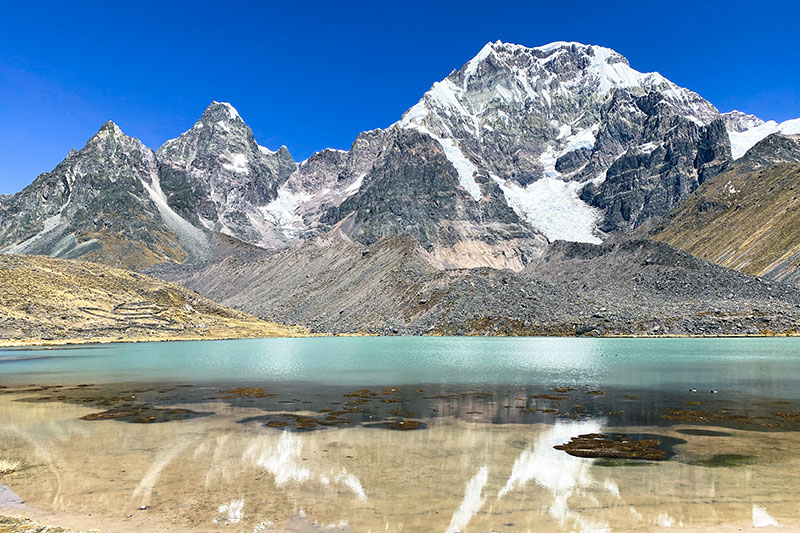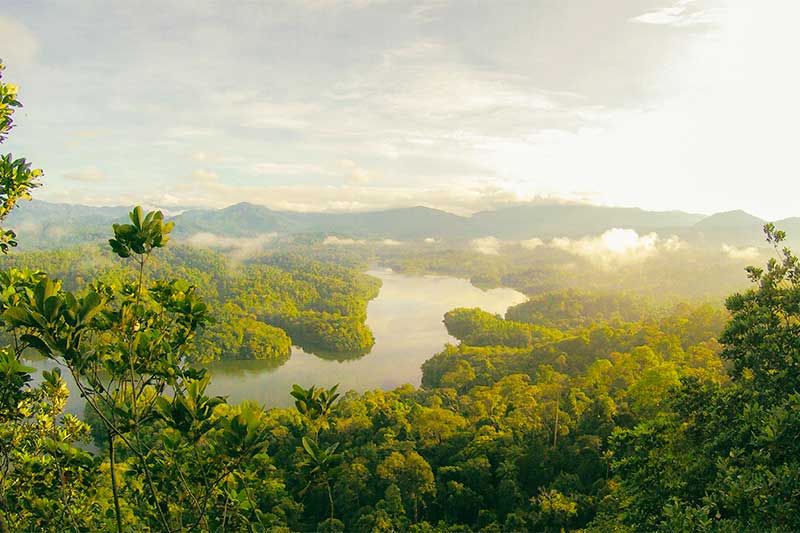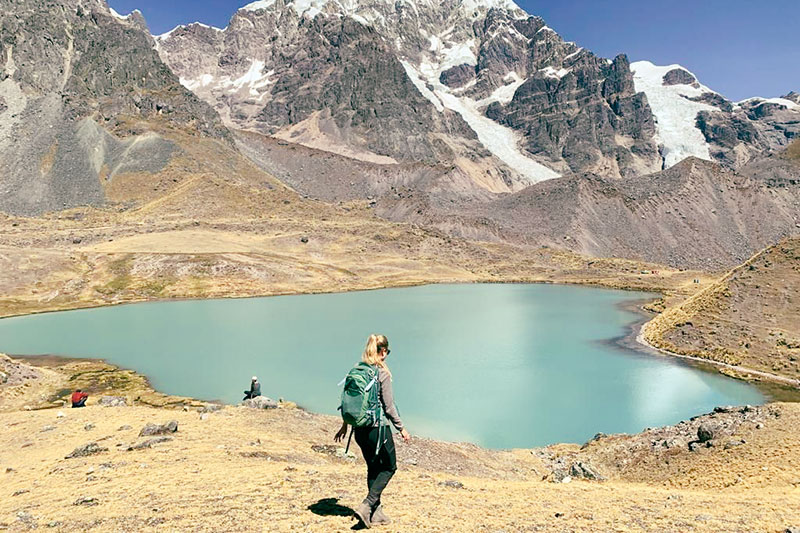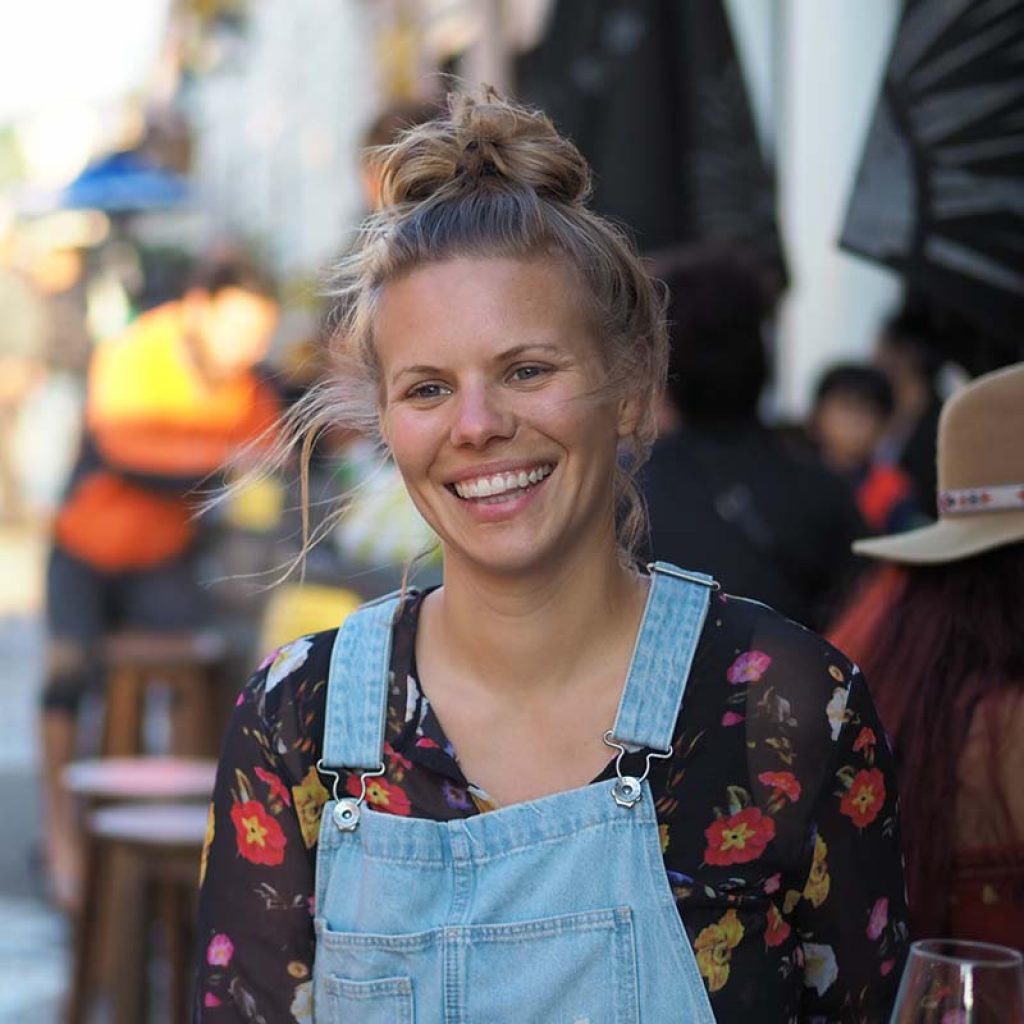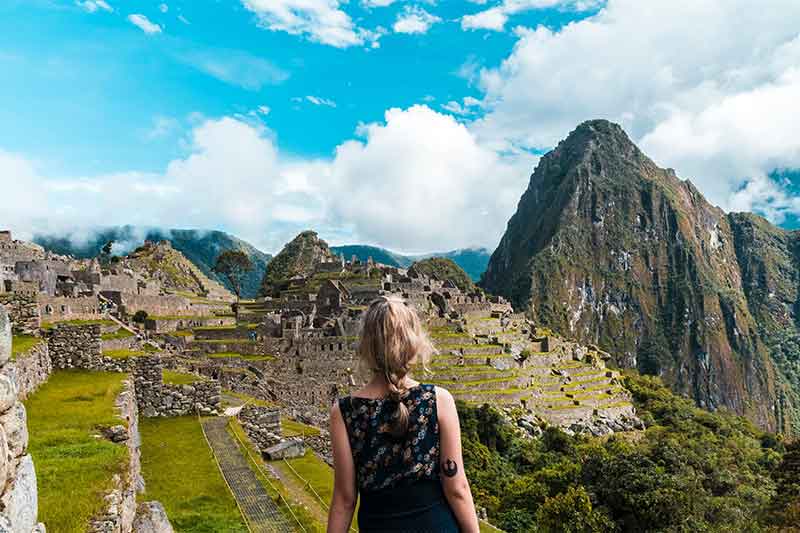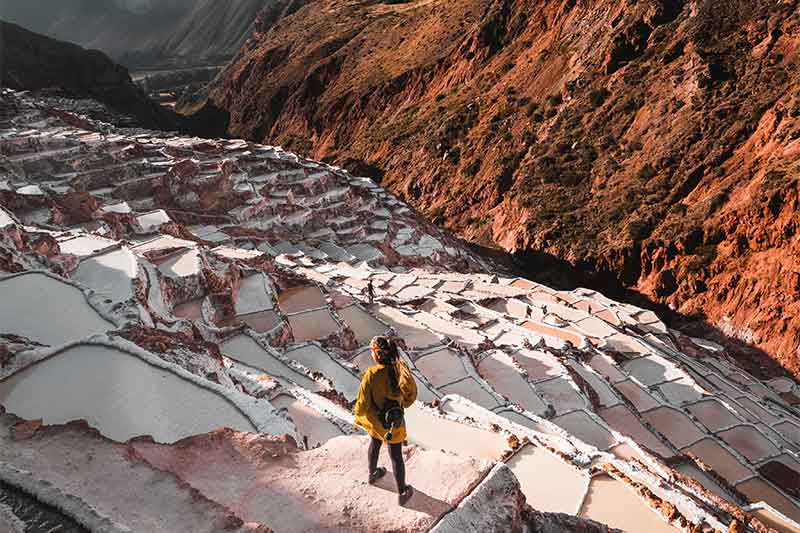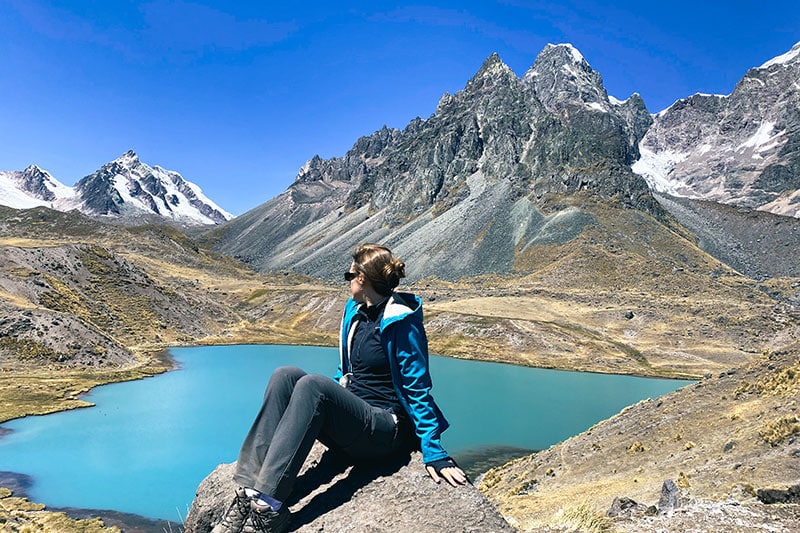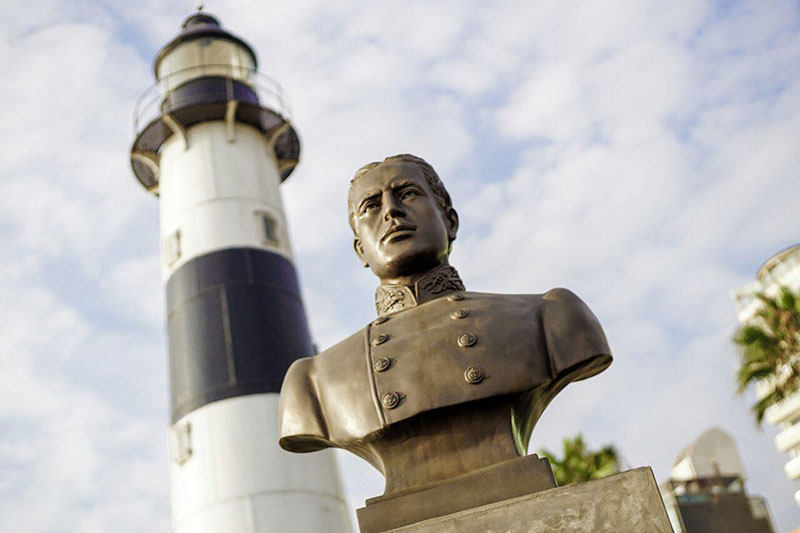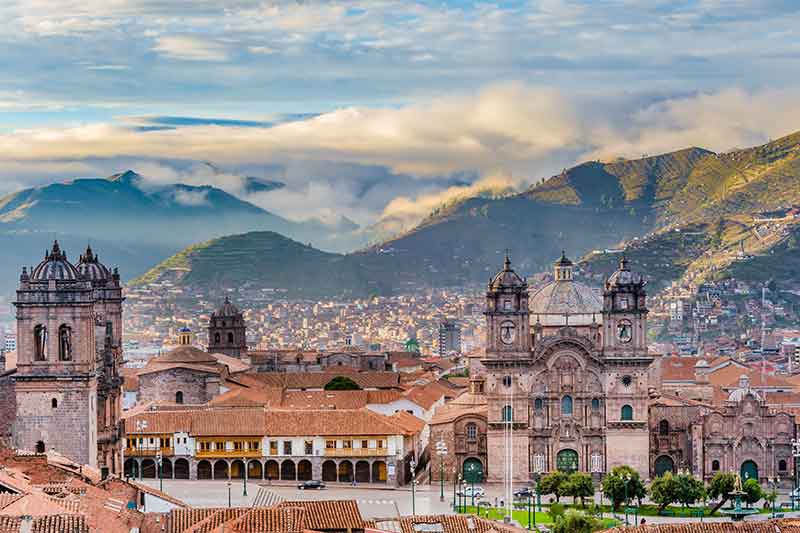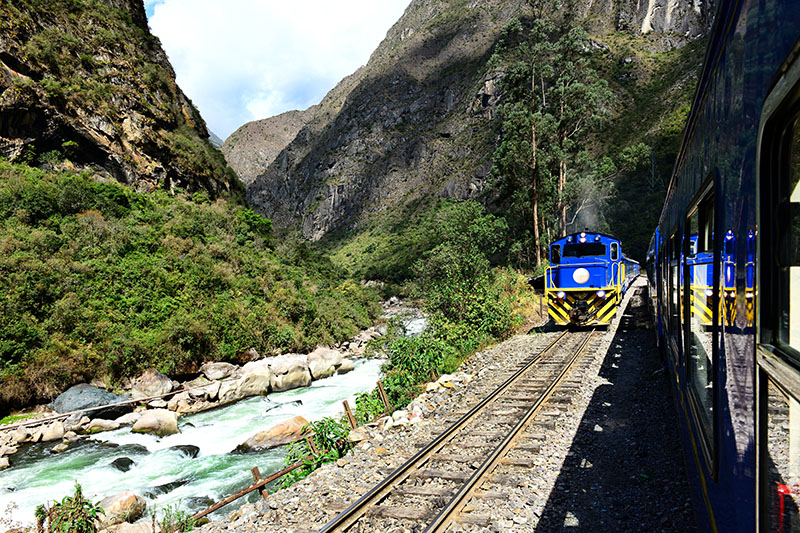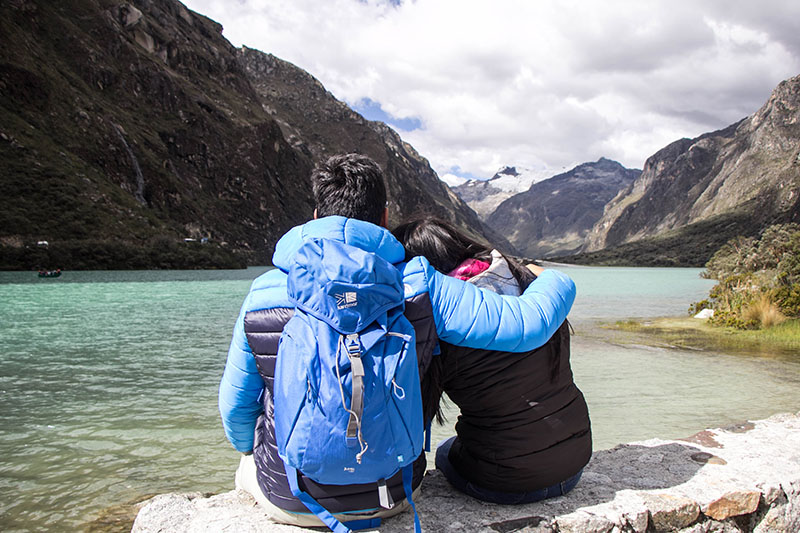VOLUNTEERING IN PERU
Are you longing for an adventure afar and want to do some good at the same time? Do you feel like exploring a diverse country from Andean peaks to desert regions and the rainforest? Bienvenido to Peru! We offer you a diverse stay in distant lands where you can support various aid projects. Peru offers you a world full of culture, history, and unique landscapes that you have never seen before. It's not just a destination for backpackers and tourists; volunteers and participants in voluntary social year (FSJ) are also drawn to the land of the Incas. Get to know Peru off the beaten path and immerse yourself in its culture, nature, and learn about the history of the indigenous people who built Machu Picchu. Simply sign up for our consultation to learn more about the programs and planning your trip to South America.
By the way: If you'd rather participate in a Work and Travel program in Peru instead of volunteering, then take a look at our programs for Work and Travel in Peru.

- WanderWorld Travel Community
- Contact persons in Peru and Germany
- No visa required
- Welcome Days with our local guide
- Accommodation included
- Flight booking on request
- Broadening your own horizons and changing your perspective
- Exchange of intercultural knowledge and skills
- Out of the European bubble
- International experience for volunteers and project
- Support a good cause
Our volunteer projects in Peru
Children's aid projects
Our social projects in Peru not only support the academic education of children and teenagers but also provide them with a safe space to express themselves and enjoy their childhood. Through various pedagogical activities, we promote their creative, athletic, and social skills, laying the foundation for a self-determined life.
More about our children's aid projects:
The indigenous population of Peru faces significant challenges, with many living below the poverty line. The undersupply of resources stems from socio-political inequalities and discrimination, particularly affecting people in rural areas. To ensure children in these regions have the opportunity to shape their own futures and avoid negative influences, access to education and motivation are crucial. In various social projects across Peru, these children find a refuge where they can feel safe and loved. Whether you assist with teaching, homework help, or organizing recreational activities, your support is invaluable in many ways. Additionally, this experience offers a unique opportunity to deepen your Spanish skills. You will quickly discover the gratitude with which Peruvian children greet you.
In the rural area of Lamay, Peru, you can participate in the Teaching Project, where you'll be involved in caring for and teaching the local children. Alternatively, you can support an orphanage in Arequipa through the Youth Development Project, providing care to children who have experienced traumatic events. Additionally, the Child Care Project in Huaraz welcomes assistance with recreational activities and homework supervision. Each opportunity allows you to make a meaningful impact on the lives of children in Peru.
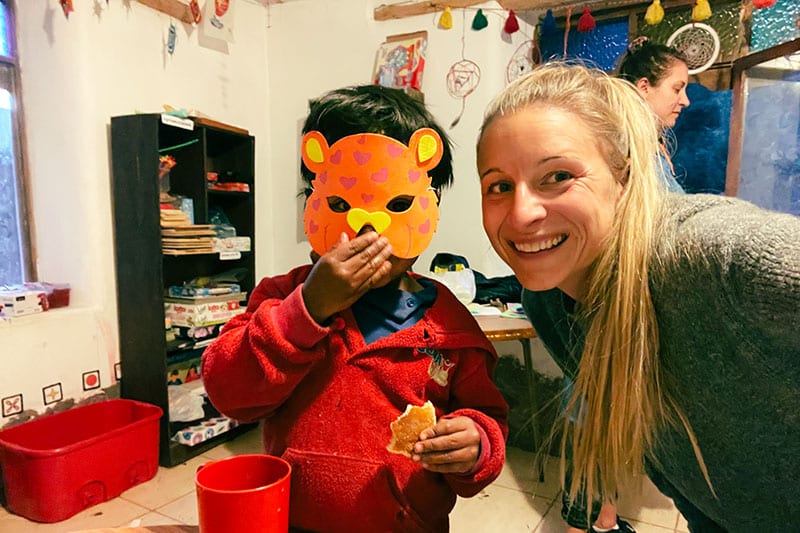
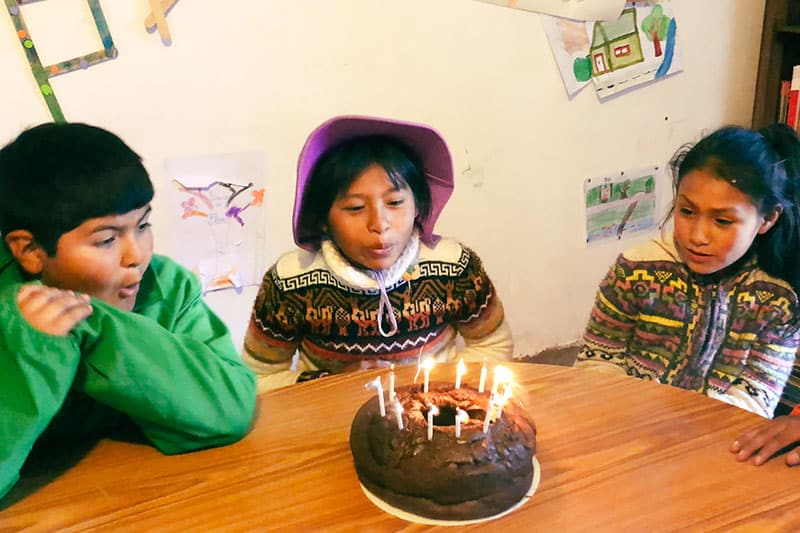

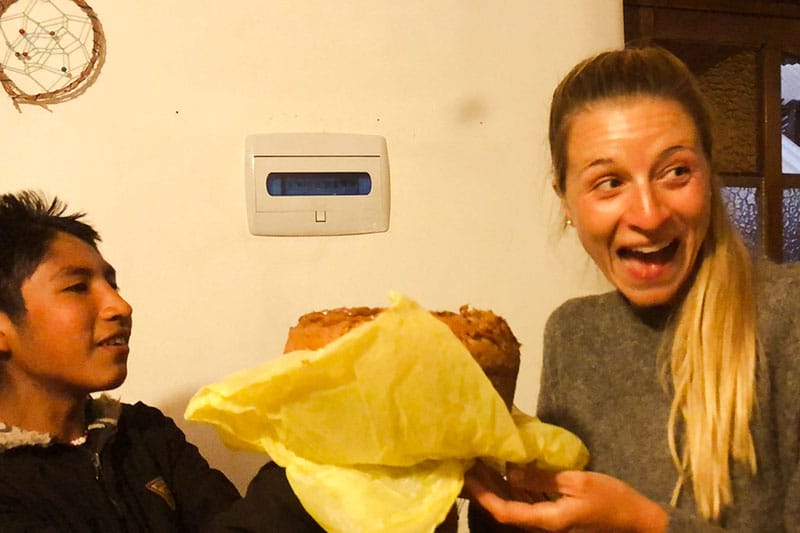

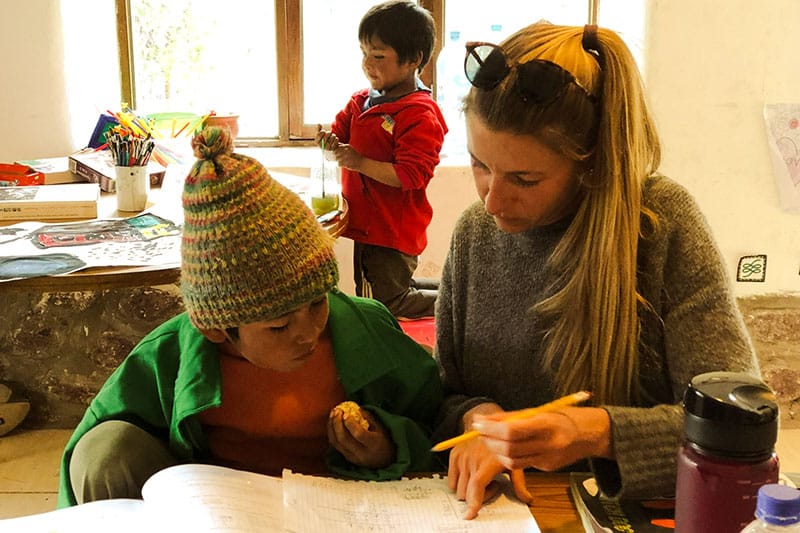
Animal and nature conservation projects
With approximately 60 percent of its land covered by dense rainforest, Peru faces the challenge of curbing the destruction of this valuable ecosystem. Aid projects are therefore increasingly focused on rainforest conservation. Protecting endangered species also plays a crucial role. You can contribute to preserving the incredible natural diversity and wildlife of Peru.
More about our animal and nature conservation projects:
Get to know aid projects in Peru
Peru is one of the three largest countries in South America in terms of area and consists of three different climatic zones: Costa (coastal region), Sierra (Andes and highlands), and Selva (rainforest). Approximately 60 percent of the country is covered by Amazon rainforest. The destruction of the rainforest has long been a problem addressed by NGOs and aid projects in Peru. To protect the national reserve, our conservation project near Puerto Maldonado was established. Together with experienced farmers, foresters, and ecologists, you contribute to the reforestation of the area.
Besides reforesting the rainforest, the protection of endangered species in Peru also plays a crucial role. At a wildlife sanctuary near Cusco, you would be involved in caring for animals such as alpacas, pumas, parrots, and Andean condors. Educating visitors and locals about conservation is also a significant part of your work: you'll raise awareness among the public and tourists alike, emphasizing the importance of species preservation during visits to the sanctuary.

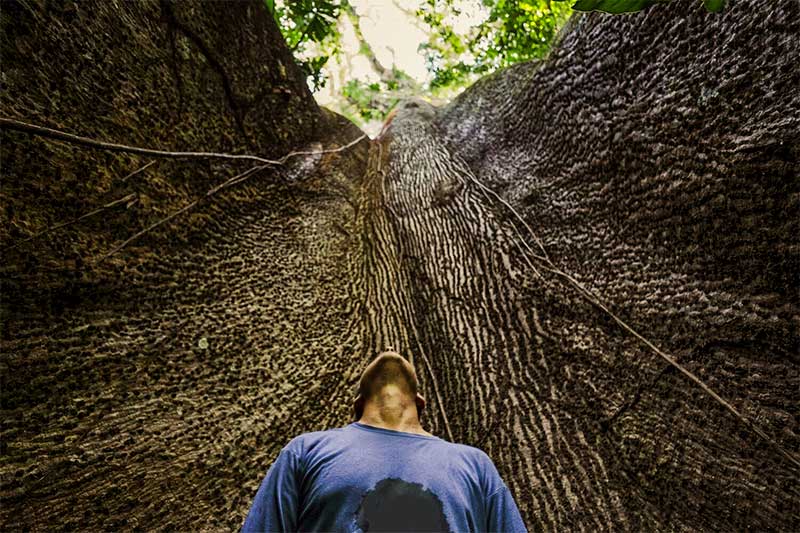
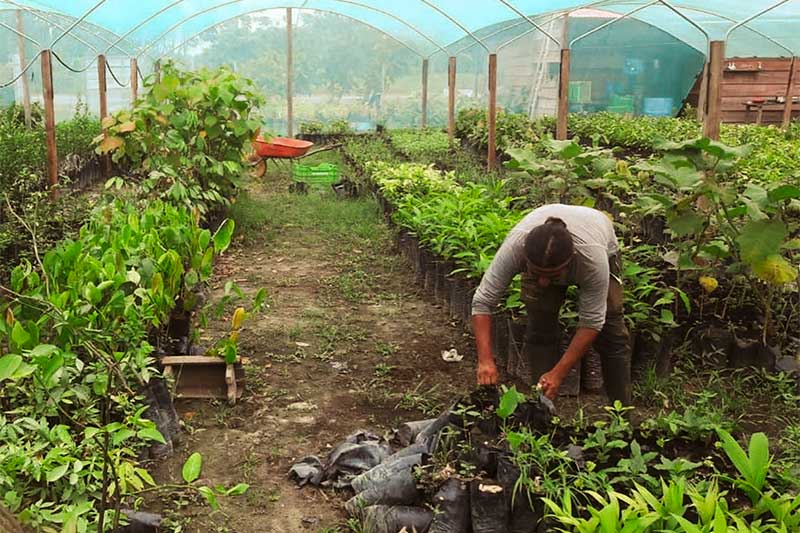

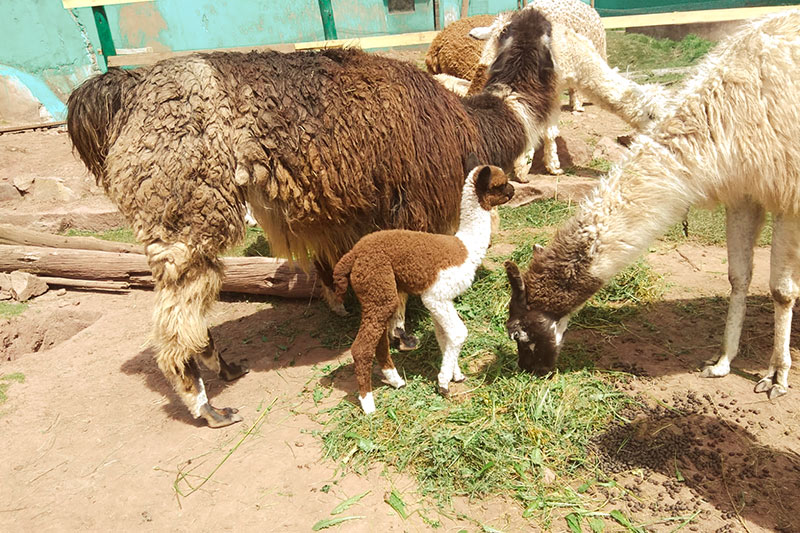


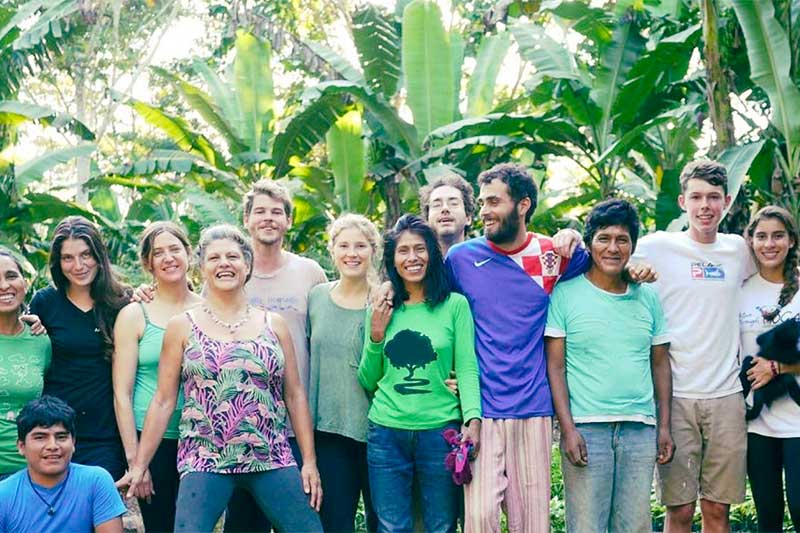

Volunteering in Peru
with wanderworld travel

Peru is a country of breathtaking diversity and cultural richness, with World Heritage sites such as Machu Picchu and the historic center of Lima. The landscapes are as diverse as they are impressive – from the Amazon rainforest to the majestic Andes, and from the Pacific coast to the desert. This diversity offers volunteers like you a unique opportunity to explore different habitats and cultures, while positively impacting local communities. In addition to its natural beauty and cultural diversity, Peru offers a rich culinary tradition that promises exotic culinary experiences. Whether for a short or longer stay, the country provides a complete package of diverse landscapes and deep insights into its culture and traditions.
Most diverse country
Did you know that Peru has over 12 UNESCO World Heritage sites? Among them are Machu Picchu, the city of Cusco, Huascarán National Park, and the historic center of Lima. Additionally, the country offers as many different landscapes as almost no other on Earth. Reason enough to spend your volunteer work in diverse Peru. Peru not only hosts a large part of the Amazon rainforest but also 3000 km of Pacific coastline, desert regions, and the impressive Andes mountains with peaks over 6000 m high. Here, you don't have to choose between mountain hiking, jungle expeditions, beach, or city but have everything in one country. In a short time, you find yourself in a different climate zone and can make the most of a short or long stay. Take impressions of rainforest, Andes, colonial cities, Pacific beaches, deserts, lagoons, and much more in your backpack back home.
Cultural heritage
Cultural heritage
Did you know that Peru offers a unique culture shaped by history and traditions? Between the 13th and 16th centuries, Peru was inhabited by the Incas, who had their capital in Cusco. The ancient traditions, myths, ways of life, and spiritual beliefs of the Incas still influence Peruvian culture today. In the highlands, you will also find numerous small indigenous communities, each preserving its own culture and living outside of modernity. A variety of small communities with different customs and even different languages coexist side by side. To this day, alongside Spanish, many indigenous languages such as Quechua or Aymara are spoken. Peru boasts countless archaeological sites that testify to life from another time. Just one example among many are the Nazca Lines. These mysterious geoglyph-like drawings by indigenous people stretch across a desert region in the south and are best viewed from the air.
The Andes
The Andes are among the longest mountain ranges on Earth and stretch from north to south through Latin America. In our opinion, Peru is the best country to experience the majestic Andes. Fascinating cities like Cusco, Arequipa, Huaraz, and Puno are located at over 3,000 meters altitude and offer optimal conditions for one-day and multi-day hikes through the mountains. Trekking fans will find their paradise here! You can hike to breathtaking destinations such as turquoise lagoons, Machu Picchu, or Rainbow Mountain. The Andes captivate with diverse fauna, flora, and landscapes including glaciers, volcanoes, grassy plains, lakes, and forests. Special highlights include Machu Picchu and Lake Titicaca. In the cool highlands of the Andes, fluffy alpacas feel particularly at home, and you are sure to encounter these cool animals more than once.
Culinary experiences
Peru's variety of cultural influences has greatly impacted its cuisine, and the diversity of dishes and flavors that have emerged have gained international recognition. It's no wonder that since 2012, Peru has won the title of 'Best Culinary Destination in the World' at the World Travel Awards 9 times. There, you can try a wide range of dishes you've never heard of before. Ceviche (raw fish in lime juice), Chicha de Maíz (corn beer), or Cuy (guinea pig) are just a few exotic examples of extraordinary foods. Of course, you must also try Peru's national drink: Pisco Sour. This is a cocktail made from grape brandy, lime juice, and raw egg white. The best restaurants and street food can be found in Lima, where you can indulge in numerous affordable and upscale dining options.
As diverse as Peru is, so are our volunteer projects and locations.
We offer you various accommodation options. For example, you can live in a single room or in a shared apartment. This way, you have your cozy privacy but can connect with other residents in the kitchen or common area.
Our programs also offer the opportunity to live together with other volunteers and staff in the project's own house. You'll share a dormitory room in the accommodation and spend not only work but also leisure time in a family-like community. Meals are partially included, otherwise, a communal kitchen is always available. Feel free to ask us about accommodation options, and we'll find the right program for you
We are happy to assist you with the arrival to our program locations. For Cusco, Puerto Maldonado, and Arequipa, we recommend a domestic flight from Lima. If you choose to book a travel package, we will organize your onward journey including taxis and domestic flights.
Why volunteering in Peru is worthwhile
If you decide to volunteer in Peru, you have the choice between various volunteer projects that pursue ecological or social goals. Depending on your interests, you can support environmental and species conservation or work with children from underprivileged backgrounds. While doing something good for others, you can fully immerse yourself in the culture and collaborate closely with locals. It's an experience that will open new perspectives for you and contribute to personal development.
We understand that volunteering in Peru means embarking on a journey into the unknown. That's why it's important to us that you receive all the information you need to feel secure. Through personal phone calls and informative materials, we prepare you for your journey and provide all the details about your chosen project. When selecting our projects, we personally visit them to get an accurate picture of the work environment. The WanderWorld Travel team has extensive experience traveling in Peru, knows the local conditions well, and can offer valuable tips. We maintain a personal connection with our volunteers and assist with any questions, both before and during the trip. With our years of experience collaborating with NGOs, you can confidently realize your dream of volunteering with WanderWorld Travel.
OUR PROJECT LOCATIONS IN Peru







IN peru

Carlos is German-Peruvian and lives in Lima. He speaks both Spanish and German. During the orientation session, you'll take a walking tour through the capital of Peru. Carlos can show you his city like no one else, giving you authentic insights into Peruvian culture and cuisine. If you have any questions about the country, he's there to assist with his friendly and helpful nature, offering tips for traveling and ensuring you have an unforgettable stay in Lima.
YOUR LEISURE IN Peru
Immerse yourself in the extraordinary diversity of activities in Peru. From the majestic peaks of the Andes, through the enigmatic remains of the Inca civilization, to vibrant local markets – enjoy the unique experiences that this impressive country offers.

Machu Picchu is undoubtedly one of the most impressive archaeological sites in the world. A hike on the historic Inca Trail takes you through breathtaking Andean landscapes directly to this fascinating place, where you can experience the mystical atmosphere of the Incas.

San Blas in Cusco is a picturesque district known for its narrow cobblestone streets and lively art scene. Here you can admire traditional craftsmanship and enjoy the unique charm of this historic district.

The Peruvian Andes offer a variety of trekking routes for the adventurous. From hikes lasting several days on the Inca Trail to day trips in the Colca-There is something to discover for every hiker.

If you are in Cusco you must not miss the chance to see the famous Rainbow Mountain to climb. The colors of the mountain are not a myth, they are real, unique Natural wondersthrough Mineral deposits caused.

Discover the unique flora and fauna of the Amazon rainforest on a jungle tour you undertake Boat trips on rivers, watchingst exotic animals and learnst from the local guides about the ecological diversity of the rainforest.

The Oasis of Huacachina in the Peruvian desert not only offers spectacular landscapes, but also the opportunity to go sandboarding on the huge sand dunes and enjoy the unique atmosphere of this picturesque place.

Immerse yourself in the rich Peruvian cuisine on a culinary tour through cities such as Lima, Cusco or Arequipa. Taste local specialties at lively markets and interactive cooking classes where you can learn the secrets of local cuisine.

Explore the unique floating islands of the Uros on the Lake Titicacathe highest navigable body of water in the world. Learn more about the life of the indigenous population and enjoy the breathtaking landscape.
WITH WANDERWORLD YOU HAVE MANY OPTIONS.

Work & Travel
Language trip
FARM EXPERIENCE
Work & Travel
Language trip
FARM EXPERIENCE
Would you like to know how you can combine your projects with us?
Find out how it works here!
EXPERIENCE REPORTS
ABOUT VOLUNTEERING IN PERU

VOLUNTEERING IN PERU AND YOU ARE A PERFECT MATCH?

TALK TO ...
... ABOUT YOUR ADVENTURE !
Here we can plan your volunteer work in Peru together and talk about your ideas.
Register now for the WanderWorld consultation ☎️. We look forward to seeing you!
All without obligation and free of charge.


